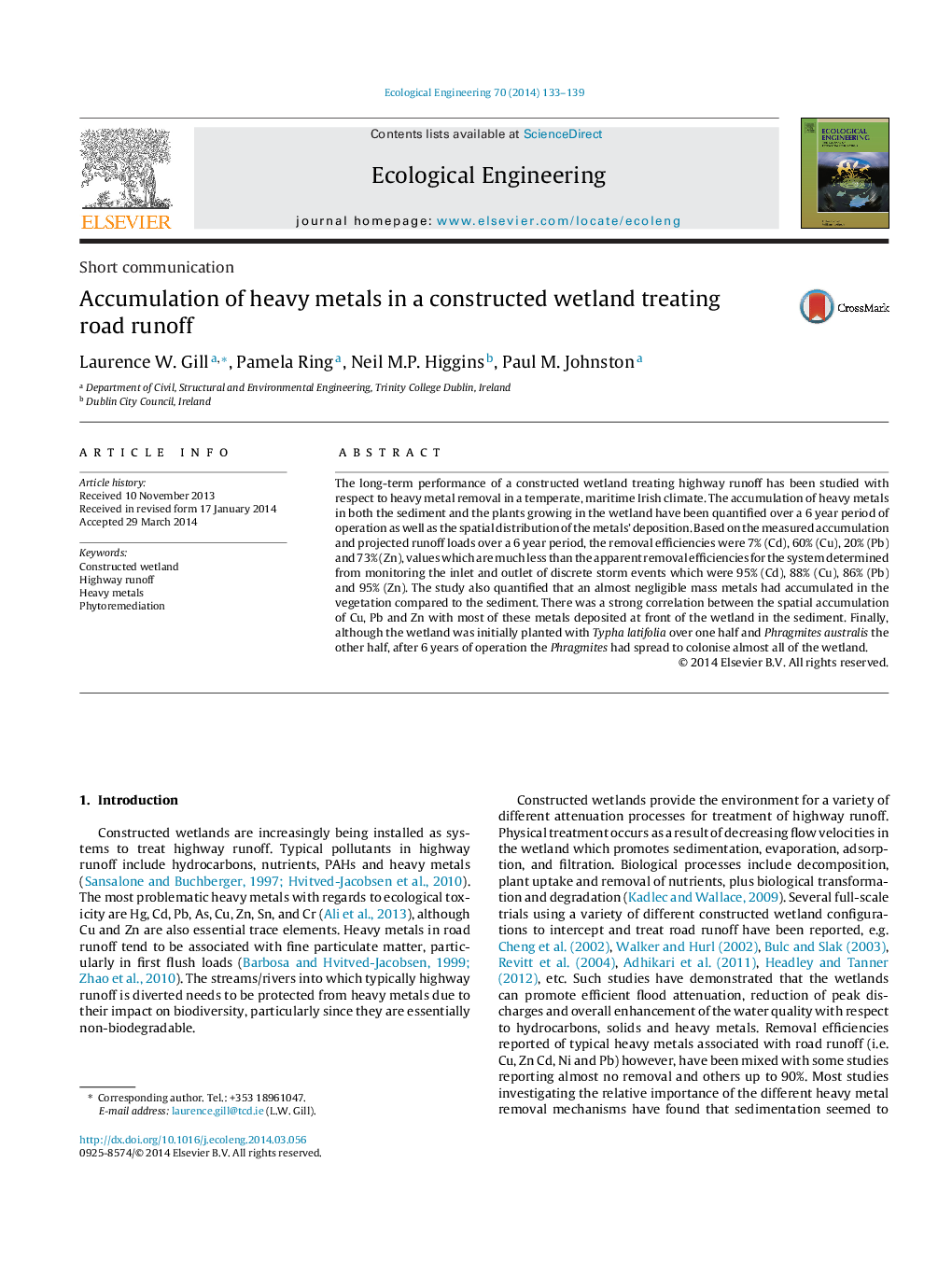| Article ID | Journal | Published Year | Pages | File Type |
|---|---|---|---|---|
| 6302120 | Ecological Engineering | 2014 | 7 Pages |
Abstract
The long-term performance of a constructed wetland treating highway runoff has been studied with respect to heavy metal removal in a temperate, maritime Irish climate. The accumulation of heavy metals in both the sediment and the plants growing in the wetland have been quantified over a 6 year period of operation as well as the spatial distribution of the metals' deposition. Based on the measured accumulation and projected runoff loads over a 6 year period, the removal efficiencies were 7% (Cd), 60% (Cu), 20% (Pb) and 73% (Zn), values which are much less than the apparent removal efficiencies for the system determined from monitoring the inlet and outlet of discrete storm events which were 95% (Cd), 88% (Cu), 86% (Pb) and 95% (Zn). The study also quantified that an almost negligible mass metals had accumulated in the vegetation compared to the sediment. There was a strong correlation between the spatial accumulation of Cu, Pb and Zn with most of these metals deposited at front of the wetland in the sediment. Finally, although the wetland was initially planted with Typha latifolia over one half and Phragmites australis the other half, after 6 years of operation the Phragmites had spread to colonise almost all of the wetland.
Related Topics
Life Sciences
Agricultural and Biological Sciences
Ecology, Evolution, Behavior and Systematics
Authors
Laurence W. Gill, Pamela Ring, Neil M.P. Higgins, Paul M. Johnston,
